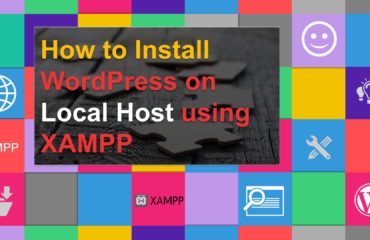
Build Your Website in Five Steps
With WordPress.com, it’s easy to create your own website or blog in seconds. Here are 5 steps to help you launch your wordpress website. To install WordPress, start by registering for a domain and a web hosting account at any hosting provider. Figuring out which is the best hosting company is difficult task given the range of specifications, features and prices in the market, i believe when talking about hosting account, you get what you pay for. Once you have completed your WordPress setup follow these 5 simple steps to build your website.
- Outline your site’s content.
- Create pages.
- Configure your site to use a static home page.
- Pick a theme you love.
- Create a menu.
-
Outline your site’s content.
Site Structure
The success of the organization of your web site will be determined largely by how well your site’s information architecture matches your users’ expectations. A logical, consistently named site organization allows users to make successful predictions about where to find things. Organizing and displaying information in a structured way permit users to extend their knowledge from familiar pages to unfamiliar ones, else users will be frustrated by the difficulties of getting around and understanding what your site has to offer. take a minute to sketch out the important pieces of your site, like the critical information and the pages you want to include.
The goal is to build a hierarchy of menus and content pages that feels natural to users and doesn’t mislead them or interfere with their use of the site. Web sites with too shallow information hierarchy depend on massive menu pages that can degenerate into a confusing list of unrelated information. Google advice that you keep your deep links 3 clicks away for example
- Home > Services > service information
- Home > Blog > Article
- Help > Contact > e-mail contact form
If your site has more than a few dozen pages, your users will expect web search options to find content in the site. In a larger site, with maybe hundreds or thousands of pages of content, web search is the only efficient means to locate particular content pages or to find all pages that mention a keyword or search phrase.
-
Create pages.
WordPress allows you to create posts and pages. Be sure to create one page to be your site’s home page, and one blank page to house your blog archive. Watch the video below for a quick overview of how it works
-
Configure your site to use a static home page.
By default the front page of your WordPress.com site will display latest posts from your blog. If you would like to create a home page (landing page), you can set a static “home” page instead.
- In your site dashboard add a new page, and title your new page “Home.” Be sure to publish this page.
- In your wordpress dashboard click on Appearance>Customize, Select the Static Page option, then choose your new page from the Front Page drop down.
- Click on the Save & Publish button to save your static page settings.
-
Pick a theme you love.
Now that you have the pages set, choose a theme you love. With WordPress you have the freedom to select between free WordPress themes vs premium WordPress themes. Make sure you Pick The Perfect WordPress Theme For Your Website. You can find top notch wordpress themes at Theme Forest, Mojo Marketplace, Template Monster, Studio Press, Themeisle and My Theme Shop.
-
Create a menu.
Finally, create a menu of all your new pages so visitors can navigate your site easily. The menu location & design can vary depending on your theme. You can use alter the navigation style and position by using Flexible mega menu plugin or Uber Menu plugin
Launch your website
Now that your website is ready to launch promote it on all your social media platforms. Here are 18 ways to promote your website online for free, learn don’t forget to add your logo or branding, connect your site to your social media presence, I hope you find these tips helpful in building your first WordPress website. To learn more about WordPress check How to Install WordPress – Complete WordPress Installation Tutorial 101.


